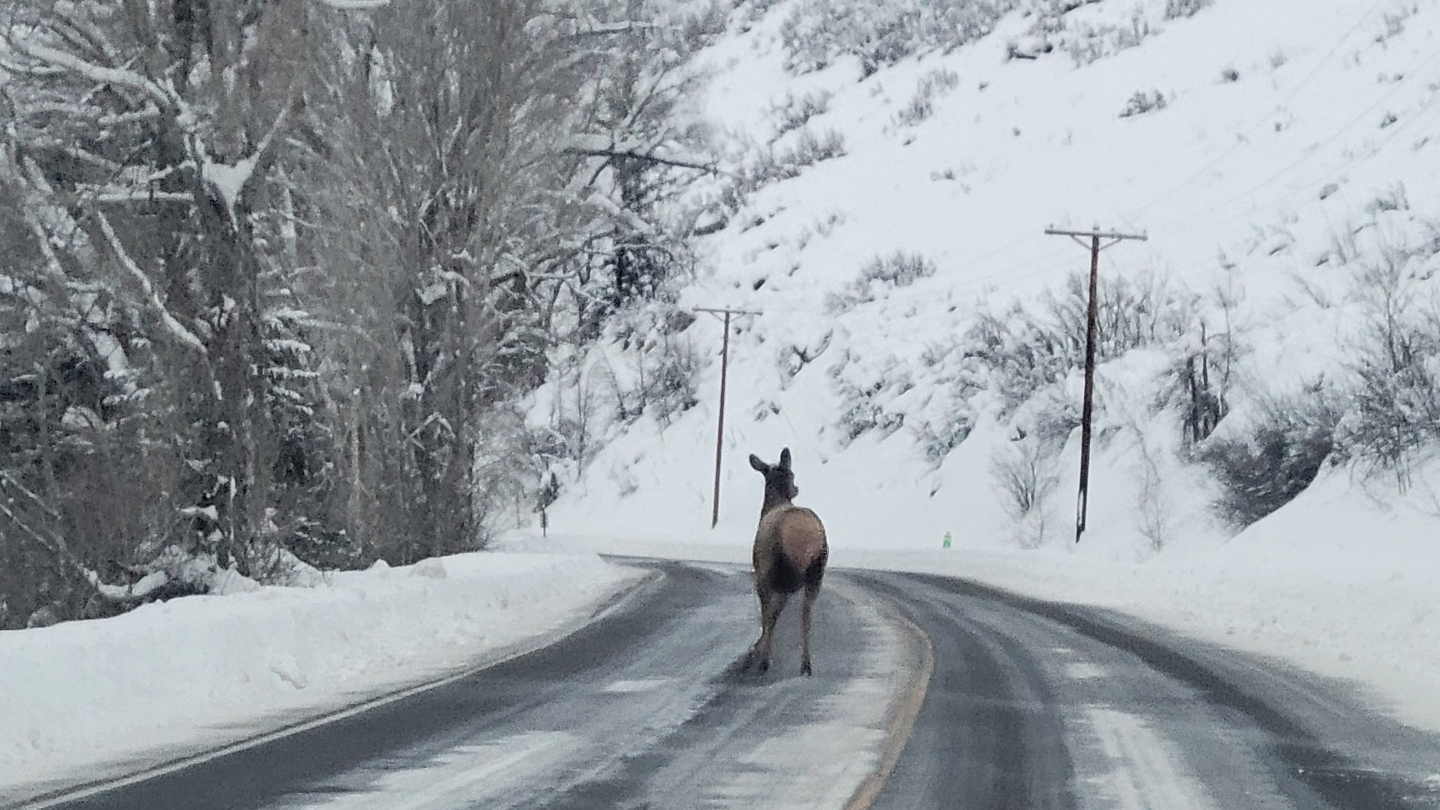CPW sees impacts on wildlife as another winter storm moves into the high country
Steamboat Springs, Colo.
Colorado Parks and Wildlife has begun to see impacts on wildlife as snow continues to pile up in Routt County. With another round of snow on the way to areas in the northwest this weekend, CPW wildlife officials expect to see additional impacts to wildlife.
During the winter months, wildlife will move to lower elevations where living conditions are more favorable for survival. These areas, referred to as winter range, have less snow coverage making it easier for wildlife to get to vegetation. Prolonged snow on the ground and cold temperatures have led to poor conditions in areas traditionally considered to be good winter habitat. Deep snow has made it difficult for wildlife to access vegetation, leading to starvation and in some cases death.
“Seeing animals in poor body condition or starving is hard,” said Wildlife Officer Kyle Bond. “We know people mean well when they try to help. Unfortunately, that desire to help can be more harmful. It is hard to sit back and watch, but the reality is this is nature. Sometimes we have to let nature take its course.”
Although food may be scarce, it’s crucial to remember under no circumstance should you ever feed wildlife.
Although food may be scarce, it’s crucial to remember under no circumstance should you ever feed wildlife. Not only is it illegal, but it is also very harmful to their health. Wildlife such as deer and elk have a complex digestive system that is not adapted to handle human food, hay, alfalfa or straw. When people intentionally place or distribute food, salt blocks and other attractants for wildlife, it can lead to illness, poor body condition or death.
Feeding wildlife can also attract predators and increase the spread of diseases in wildlife. To learn more about the law and how feeding wildlife can do more harm than good, visit our website.
“While feeding wildlife is harmful, there are other actions you can take to help wildlife survive during this critical time,” said Bond.
When heading out to enjoy the snow this winter, it’s important to recreate with wildlife in mind. Winter range is located all over Colorado and often found in areas located near populated recreational trails and open space. Because of this, human and wildlife interactions can impact the survival of wildlife during the winter months.
When wildlife feel threatened, they often run to escape the perceived danger, burning calories needed to survive until spring green-up. Simple steps like having a backup plan to avoid overcrowding and keeping dogs under control and on a leash can have a big impact on wildlife survival. CPW also reminds you to pay attention to area closures. If it is closed, don’t enter.
“Wildlife is always on the move,” said Northwest Region Public Information Officer Rachael Gonzales. “During certain times of the year, we see wildlife move from one location to another. Because of the higher snow depths in areas wildlife traditionally travel to in the winter, we’re seeing wildlife on the move during times when we typically see less movement as they search for better habitat to survive the winter.”
Snow depth has made it difficult for wildlife to move from one area to another in search of food. Seeing wildlife along or on the road may be more common as they are moving from one location to another, and roads offer an easy pathway. It’s important to remove all distractions when driving and pay close attention to your surroundings, especially during dawn and dusk.
In addition to seeing wildlife along the roads, Steamboat Springs area wildlife officials have noticed an increase in sightings of wildlife in residential areas and around town.
“We’ve seen an increase in calls reporting wildlife in neighborhoods asking what they can do to keep them from eating their ornamental trees and shrubbery,” said CPW Steamboat Springs Area Administrative Assistant Christy Bubenheim. “We’re encouraging people to embrace the opportunity to see wildlife, being sure to give them space. If you don’t want the animals in your yard, using exclusionary options like fencing or products like mothballs or PlantSkydd may be an option.”
Colorado Parks and Wildlife officials will continue to monitor conditions. During this critical time, it is important for everyone to do their part to be a good neighbor to wildlife and minimize the impact their actions have on these animals that are working hard to survive until spring.
This story was written by Rachael Gonzales, Northwest Region Public Information Officer for Colorado Parks and Wildlife.





